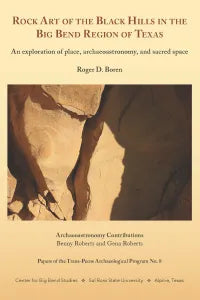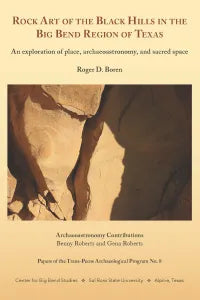Rock Art of the Black Hills in the Big Ben Region of Texas
Rock Art of the Black Hills in the Big Ben Region of Texas
Regular price
$35.00 USD
Regular price
Sale price
$35.00 USD
Unit price
per
Couldn't load pickup availability
A survey of the ca. 2,800-acre Black Hills, located in central Brewster County, Texas, has resulted in the recordation of 37 campsites and 29 rock art sites. The Black Hills, consisting of the Lower Aguja sandstone formation capped by a volcanic sill of basalt, range in elevation from ca. 3,000 to 3,880 ft above mean sea level. The bulk of the campsites are located in the lower elevations, and the majority of the rock art sites are concentrated in the upper elevations, providing panoramic views of the area. Some imagery is found on the sandstone rimrock that encircles the hills, but most are found on the large boulders that have tumbled downslope from the rimrock. Fossil casts of probable corals, highly visible on the sandstone, greatly resemble pecked petroglyphs and may have been considered as such prehistorically. Phenomenally, bisected fossil casts can occur as open circles on the faces of some boulders, and at times water seeps from these openings. In addition, the colors of the sandstone are highly attractive, ranging from cream to pink to salmon to tan, among other colors. Broad, natural, white curvilinear bands randomly mark the sandstone throughout the hills. The total rock art inventory includes zero quadrupeds and a single biped (an anthropomorph), although human-like faces and/or masks appear to be present. The rock art is more than 98% petroglyphic, and all but the very oldest and faded pictographs have peck marks on top of the paint. It is very likely that marking the pictographs in this manner neutralizes their power. Nine of the rock art sites include small slab metates of basalt, but no additional campsite features of any type are present, perhaps suggesting these sites are sacred spaces. Three combination sites include campsite features and rock art, along with boulder or cliff shelters. In 2016, it was discovered that prehistoric observations of the Sun and the night sky have resulted in the creation of astronomical features at 2 of the 29 rock art sites


